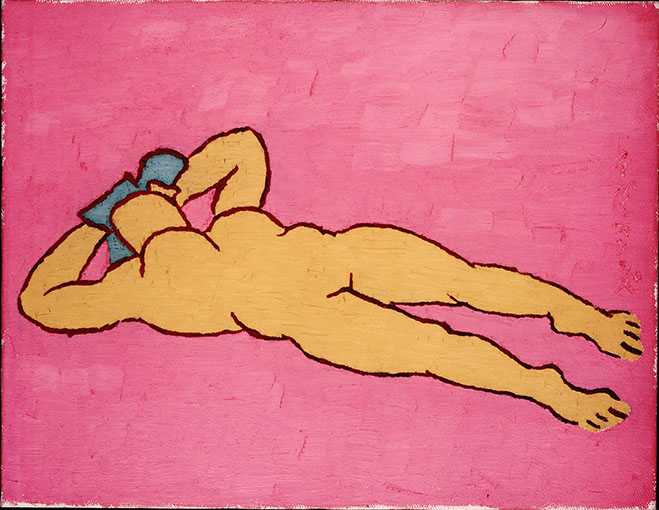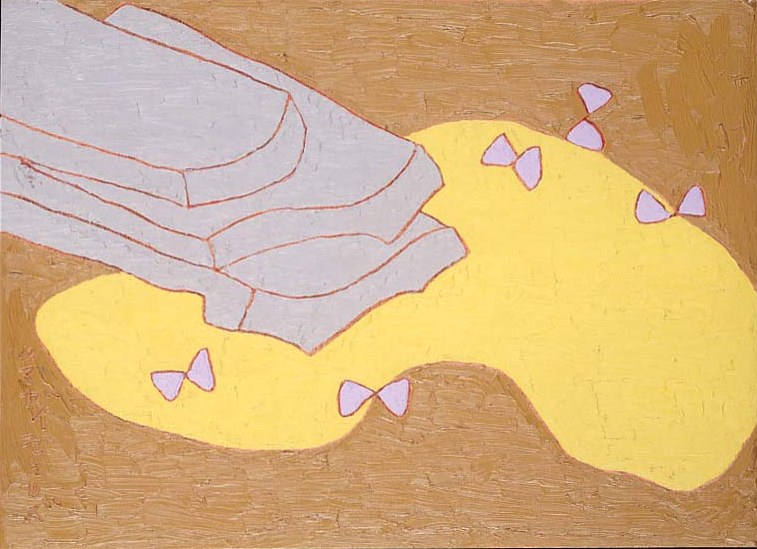
[Audio Guide]
A nude reclines in a pink space. The simplified human figure, with vibrant colors and thick outlines, makes a strong impression, but if one looks at the picture for a time, the figure too transforms into a gently rounded area of color. Kumagai’s stylistic innovation was to paint background and figure evenly, with brushstrokes going in the same direction, while carefully leaving the outlines unpainted, further enhancing the colorful flatness. Kumagai later said, “When I am looking at a landscape, I can come to see it as a nude figure. I can be seeing a landscape, but paint a nude. By the same token, I can look at a nude but see and paint it as a landscape.” For Kumagai, there was no difference between a landscape and a human body, and it was important to capture the entirety of the form as a single, solid mass.

Kumagai’s works are known for his so-called “Morikazu style,” which features clearly distinguished, vividly colored shapes with red outlines. At a glance, it may appear that he is merely simplifying the shapes of things. However, looking closely, the red outlines are indented to clearly separate each of the colored areas, and the relationship between the painted elements is quite unclear. As a starting point, the brown section represents the ground plane. So what is inside the yellow puddle? This object is unknown, though what look to be butterflies are flying above it. Amid the apparently simple surfaces of Kumagai’ s pictures, each of the elements is painted with its own individual space and time. Though it has a small surface, the severance of reciprocal connections between the motifs means that we do not tire of looking at this rich work.